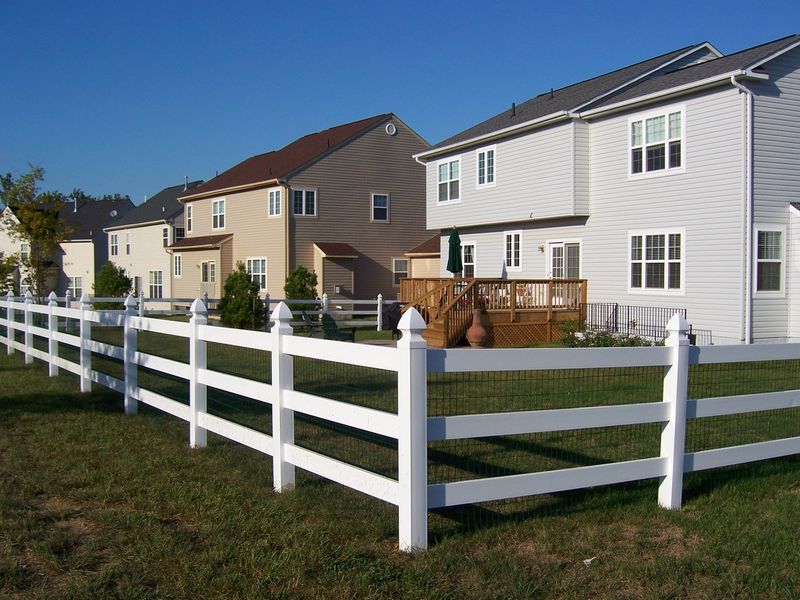Without knowing it, those looking to build a home fence can find themselves lost in a labyrinth of Kafkaesque bureaucracy before the project even begins. State laws, city ordinances, neighborhood association rules – the acronyms alone can be daunting. More, the tedious trudge through the muck of paperwork has real consequences in fines, violations, and more (you can find the consequences of violating section 6.4.3 in Division 7.8, “Violations, Penalties, and Enforcement”).
So what is a person to do? Where is one to start? Luckily, the professionals at Long Fence have years of experience in the red tape of fence construction. They can take care of all the necessary paperwork, file the correct documents, and contact the right officials to make sure the entire process goes off without a hitch. Still, you can educate yourself on the process of fence permitting to get a familiarity with the necessary steps. This research proves critical for each unique property and permit, since the ordinances and permitting processes vary so widely from neighborhood to neighborhood and city to city. This article will take you through the process from start to finish, from the first point of contact to the potential consequences for violations.
Regulations in the D.C. Area
Fencing permits in Washington D.C. can prove especially complicated due antiquated laws and historical preservation efforts. Going back to the 1790s, these laws limit action homeowners can take even in their own front yard. This space, confusingly named the “parking area,” is actually considered by the city to be parkland. According to Angie’s List, this designation gives the city extra authority to regulate the way homeowners build their fences. These regulations concern both height and material, among other things. Importantly, fences cannot obstruct views to a significant degree. More, fences must be between 3 feet and 3 feet 6 inches.
In Montgomery County, a permit is required if the fence is over 4 feet tall. Unlike D.C., there are no requirements on the type of fence or the direction the sides face. If the fence is under 6 feet 6 inches, it can be located at any point on the property (provided that it is not on a corner lot). While these regulations are certainly more relaxed than their counterparts inside D.C. proper, different specification in the codes require diligence and awareness to properly construct a fence.
In Arlington County, permits are also required for many fences. Fences not adjacent to sidewalks and streets can be 7 feet, while those near those public “right-of-ways” must not exceed 4 feet tall (a public right-of-way is simply land that is reserved for public use, often for transportation). On corner lots, fences can be built up to 6 feet tall if they are at least 3 feet back from the right-of-way.
These detailed regulations are by no means exhaustive for each area. Neighbor consent, the type of zoning, and specific neighborhood requirements can also come into play. Generally, the zoning codes are publicly accessible on the internet on municipal and county websites. Their language can prove complicated and often indecipherable to the average person, so calling a local official for help is frequently the best way to orient oneself to the relevant fence requirements.
Whom to Call
A simple google search can often be the best place to start in finding a good point of contact. Keywords “(your city) fencing codes” will most likely turn up the regulations you’ll need to follow, posted on the site of the agency responsible for their implementation and enforcement. Montgomery County has its own Department of Permitting Services which one can visit in person or reach over the phone. In the District of Columbia, the Department of Consumer and Regulatory Affairs handles fence permits and can also be reached in person, over the phone or by email. In Arlington County, the Zoning Administration of the Department of Community Housing, Planning and Development will have all the necessary information.
In all, it’s not too hard to find the agency responsible for fencing regulations and permits. More, it’s highly recommended to contact this agency to speak to someone over the phone or in person to clarify all the nuances around constructing your fence.
Submitting a Permit Application
Most applications can either be submitted online or mailed to the proper agency. While the requirements of each application vary widely, they will all ask for specific plans for the fence. It can often be helpful to obtain a survey of the property to clarify the boundaries of your plot and ensure that the fence will be built in the right place. Some permit applications can even require such a survey. More, some permits require a very detailed plan, called a “scaled plat,” that must display the planned fence to scale with the rest of the property.
Long Fence specializes in applications of any nature. We can help you obtain the necessary plans, surveys, and design a fence that complies with all the complicated regulations. With Long Fence, you’ll have a partner through the process from its conception to its completion.
Why It’s Important to Follow Local Regulations
Municipal zoning boards are known to be fickle and punitive. For instance, in 2010, the D.C. Council Chairman erected an unauthorized fence and faced fines of $300 per day he failed to file for the proper permit. The Department of Consumer and Regulatory Affairs in D.C. also states that each violation incurs a $2,000 fine and each subsequent violation can cost up to $4,000. Beyond public fines, private litigation can result in heavy expenses if the fence triggers a lawsuit. Often, the financial penalties can cost more than the fence itself, so it’s critically important to sort out the details before building and follow all codes at all phases of construction.
Read More:

